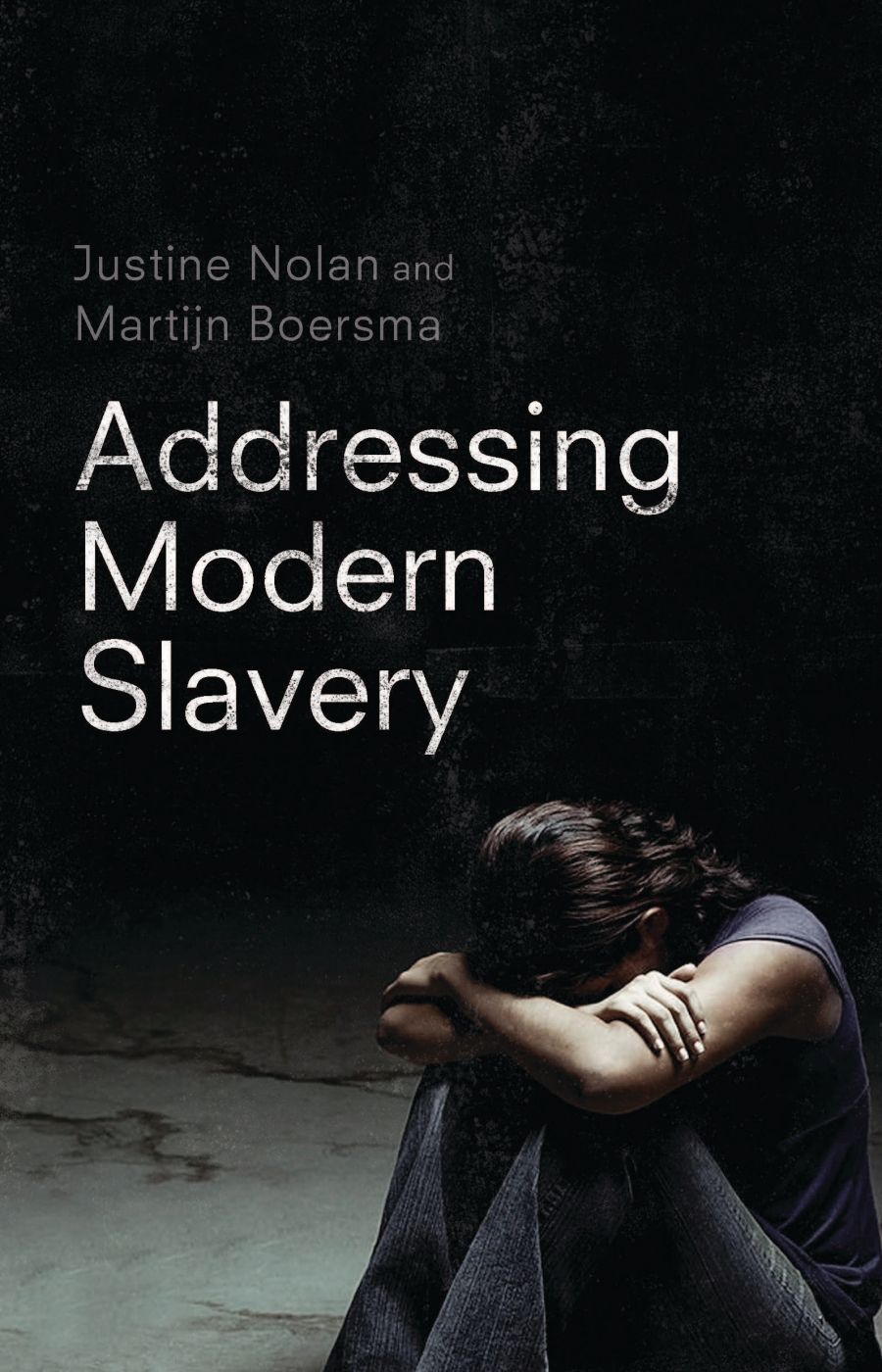
- Free Article: No
- Contents Category: Politics
- Review Article: Yes
- Grid Image (300px * 250px):

- Alt Tag (Grid Image): Addressing Modern Slavery
- Book 1 Title: Addressing Modern Slavery
- Book 1 Biblio: UNSW Press, $29.99 pb, 254 pp, 9781742236438
This is one of the central themes of the text. Throughout, Nolan and Boersma discuss the pervasiveness of modern slavery in our everyday lives. First, consider a simple transaction: paying someone to hand wash your car. The authors reveal that the car-washing industry has been identified as a high-risk area for labour exploitation in the United Kingdom, with some businesses being accused of misconduct including threatening or forcing employees to work, withholding the payment of wages, and failing to provide necessary safety equipment for the chemicals used. Recently, Australian car wash businesses have been taken to task by the Fair Work Ombudsman for the deliberate and calculated underpayment of wages.
Then, consider the more complex cross-border transactions involved when building a car in the first place. Modern slavery is almost certainly present. The mining of the mineral mica – which gives car paint its metallic sheen – has been linked to the deaths of child miners, to give just one example. In this way, both individual consumers (the car owner) and large corporations (the car manufacturer) can be the beneficiaries of modern slavery. These examples also illuminate the transnational aspect of modern slavery. Exploited car wash employees are often migrant workers. What happens in an illegal mine in India can taint cars that are purchased in Australia, many months later. This transnational element is identified as a key challenge when seeking to address the problem of modern slavery. Existing legal frameworks assume a level of state responsibility for the protection of fundamental human rights, while multinational corporations wield significant power and influence over global supply chains.
This book is commendably ambitious in scope. However, coupled with this – perhaps inevitably – is the application at times of a broad brush. This results in the relatively cursory treatment of certain matters. For example, the authors analyse the responses of different states to the problem of modern slavery by comparing legislation that requires companies (including multinational corporations) to report on their efforts to identify and address the risk of modern slavery in their supply chain. Other state responses are largely put to one side, including the role of labour inspectorates and other forms of labour supply-chain regulation, such as labour-hire licensing. Additionally, while the authors consider some examples of worker organisation, in general, there remains further scope for the authors to use their considerable expertise to more fully interrogate the role of unions and the labour movement. Finally, the reader may have benefited from further discussion of relevant empirical studies on the efficacy of business-led private regulation of workplace standards in global supply chains. A challenging and thought-provoking picture has emerged from these studies about the notion of a ‘corporate social conscience’ and its impact in practice.
Addressing Modern Slavery concludes that collaborative efforts are required to address the scourge of modern slavery. The book is at its most compelling in its detailed account of how modern slavery taints our lives each day. It is a sobering realisation. Nolan and Boersma’s final call to arms – to take actions, both small and large, to eradicate modern slavery together – could not be more urgent.


Comments powered by CComment